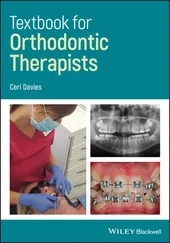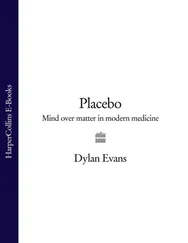The dietary laws are not universal in the Catholic Church; episcopal conferences are able to propose adjustments on the fasting laws for their home countries.
Religion is an important factor in shaping people's beliefs; their lifestyle and dietary habits may also be influenced by their religious traditions and practices.
Fasting periods exist in almost all religions; they comprise a call to holiness and spirituality.
Buddhist meditation has positive effects on reducing stress and increasing mindfulness, as well as improving BP and vascular endothelial function. Numerous studies have demonstrated the role of mindfulness‐based stress reduction in T2DM showing modest improvements in body weight and glycemic control.
A short‐term engagement in yoga practice has been found to improve obesity, CVD, and T2DM risk factors among high‐risk populations.
Fasting, known as Vrat or Vratam, is fundamental to the Hindu religion; it shows the denial of the body's physical needs in favor of mental health.
In Judaism, believers consume only what is considered to be kosher, i.e., whatever has been produced in agreement with the Jewish dietary laws.
Islamic dietary laws dictate that Muslims can eat foods that purify their body and spirit from all kinds of dirt and impurities, based on what Allah commands. The most renowned fasting period of Muslims is Ramadan.
The health benefits associated with Ramadan fasting include weight loss, improvements in insulin resistance, blood glucose, BP, and lipid profile as well as the prevention of several chronic diseases.
In Christianity, fasting is sometimes paired with prayer in seeking God’s guidance. Some sects have specific dietary rituals. In the Greek Orthodox Church fasting is practiced throughout the year, about 6.5 months/year. The dietary rules of Orthodox Christianity offer a flexible lifestyle pattern with several, well‐documented health benefits.
Self‐Assessment Questions
1 Apart from diet, what other lifestyle factors improve health status in Buddhism?
2 What kinds of foods are usually avoided during fasting in Hinduism?
3 What does Kashrut mean in Judaism?
4 During Ramadan fasting, patients with T1DM should be aware of the possibility of:hyperglycemic episodeshypoglycemic episodesincrease in body fatno changes in fat‐free mass
5 Complete the sentence: Orthodox fasting periods are characterized by _______________________.
The Nordic diet, also called the Baltic Sea diet, has been recently developed as a healthy dietary pattern. It is based on the principles of the traditional, plant‐based Mediterranean diet using foods locally available in the Nordic regions of Scandinavian countries, such as Denmark, Finland, Norway, Sweden, and Iceland. This pattern is characterized by high consumption of fruits (e.g., berries, apples, and pears), vegetables (e.g., root vegetables, cabbage, potatoes, carrots), wild mushrooms, pulses (e.g., beans, peas), nuts, whole‐grain foods (e.g., rye, barley, oats), rapeseed (canola) oil, oily fish (e.g., mackerel, salmon, herring), shellfish, and seaweed, while emphasis is given to low‐fat choices of meat (such as poultry and game), low‐fat dairy, salt restriction, and avoidance of sugar‐sweetened products ( Figure 6.2).
The Nordic diet, also called the Baltic Sea diet, has been recently developed as a healthy dietary pattern.
Compared to the Mediterranean and the DASH diets, the Nordic diet emphasizes the use of different types of oil and vegetables and fruit choices based on products indigenous to the Scandinavian region. In the Nordic diet the added culinary fat is the canola oil, a variety of rapeseed, instead of the olive oil that is used in the Mediterranean diet. Canola oil is rich in MUFAs and alpha‐linolenic acid, a plant‐based n‐3 PUFA. Moreover, in the Nordic diet, berries constitute a common fruit choice with various potential health benefits. This group of fruits is rich in a class of polyphenols called anthocyanins, whose health effects on hypertension and CVD are well established.

FIGURE 6.2 The Baltic Sea diet pyramid.
Source:Kanerva et al. (2012).
Adherence to the Nordic diet could significantly decrease insulin levels and HOMA‐IR and is associated with a significant reduction in systolic and diastolic BP. Total and LDL‐cholesterol levels are also lower compared with a Western‐type diet. In a model‐based simulation study to find the number of deaths attributable to CVDs that could be prevented or delayed in the Nordic countries, it was found that the most lives could be saved by changes attributable to an increase in fruit and vegetable intakes.
In contrast, the Nordic diet is less effective in reducing inflammation, compared with other healthy dietary patterns such as the Mediterranean diet. The type of oil (canola oil vs. olive oil) consumed in the Nordic and the Mediterranean diets, respectively, may explain the different effects on inflammation. Overall, studies show that a higher degree of adherence to the Nordic diet is associated with a healthy lifestyle.
The Diet, Cancer, and Health cohort study, conducted in Danish people of both sexes, found that greater compliance with the Nordic dietary pattern was related to lower risk of developing colorectal cancer by 35% among women. It was further indicated that conformity to each component of this dietary pattern was associated with 9% lower risk of colorectal cancer occurrence in female participants. Furthermore, evidence derived from the Swedish Women's Lifestyle and Health cohort revealed that, after approximately two decades of follow‐up, high compliance with the Nordic diet model decreased overall mortality by 18% compared to poor compliance. The studies demonstrated that lower overall mortality rates could be attributed solely to high intake of whole grains, apples, and pears.
Apart from the favorable health effects of the Nordic diet, this dietary pattern encompasses features of eco‐friendliness. Like all plant‐based diets, the Nordic diet employs a small number of natural resources in contrast to meat‐based diets, which have been accused of increasing carbon dioxide production and, thus, carbon footprint. In order for a food to be characterized as “typical” of the Nordic diet, it has to fulfill a list of criteria, such as being produced within the Nordic countries without employing external energy sources, being related to Nordic dietary tradition (such as dark bread, root vegetables, and fish), being superior in terms of health effects compared to other foods of the same food group, and being consumed as food and not only in small amounts as dietary supplement, such as spices.
A detailed description of the Nordic dietary model and a sample menu plan can be found in Appendix B.9.
The Nordic diet is a plant‐based diet and refers to the dietary pattern recently developed in the Nordic region.
Compared to the Mediterranean and the DASH diets, the Nordic diet differs in the type of recommended oil and the vegetable and fruit choices.
The Nordic diet has been proven to have favorable health effects in controlling weight status and blood glucose and in reducing cardio‐metabolic and inflammatory markers.
A food is characterized as “typical” of the Nordic diet if it fulfills a list of criteria, such as being produced within the Nordic countries, being related to Nordic dietary tradition, superior in terms of health effects compared to other foods of the same food group, and consumed as food and not as dietary supplement.
Читать дальше













